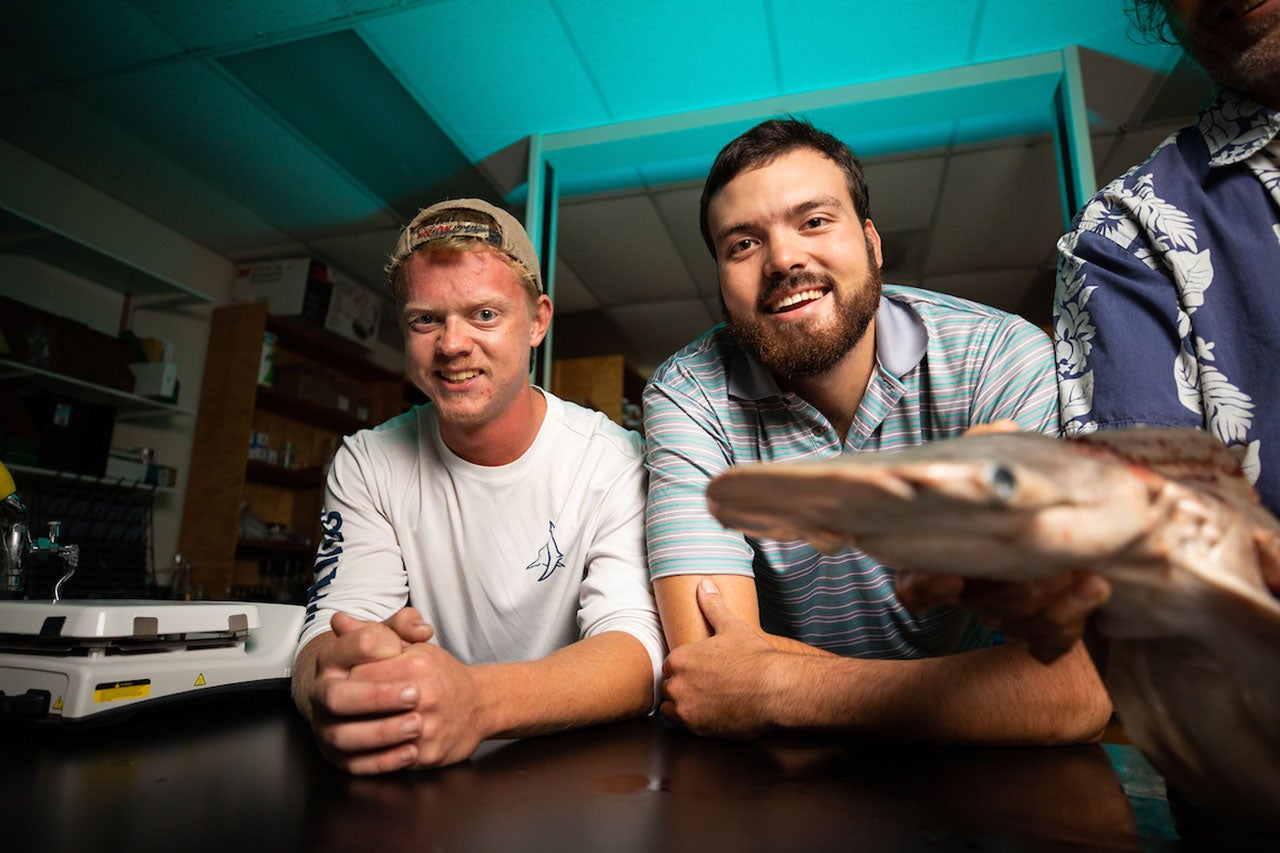Gorka Sancho (biology) leapt at a chance when Bryan Frazier ’00 at the Inshore Fisheries Group at the South Carolina Department of Natural Resources (SCDNR) lamented that the stomachs of bonnethead sharks were being discarded in a study that they were conducting. Sancho saw the stomachs as an educational opportunity and offered to recruit undergraduate students to characterize the diet of these sharks in collaboration with SCDNR.
“Stomach content analyses can be very time consuming and tedious, but it provides undergraduate students with incredibly valuable research experience and teaches them about the reality of working with biological samples,” explains Sancho. “To generate valuable data, you often have to tediously process many samples.”
Despite the rigors, two marine biology undergraduates jumped at the research opportunity: James Strange and Creed Branham (left and right above, respectively). “I became interested in researching the bonnethead shark after reading a few journal articles that suggested bonnetheads might be the first shark known to science to not exhibit an entirely carnivorous diet,” says Strange, who marks this research as his first. “I was really interested in helping to clarify the dietary habits of bonnetheads to help improve our understanding of how the animals function in coastal ecosystems.”
Sancho and his team are conducting a first-of-its-kind study to compare the diets of bonnethead sharks from the Gulf of Mexico and Florida, where seagrasses exist, to those in South Carolina, where seagrasses are not present. Past research interpreted that occasional seagrasses found in bonnethead stomachs were just accidental ingestions while feeding on creatures living in seagrass beds. A couple of years ago, however, a study showed that bonnethead sharks that were fed seagrasses in captivity actually grew and were able to digest the plant tissues.
It took more than 12 months for the stomach samples to be processed. Now the team is working on finishing the data analysis and preparing the manuscript, which is expected to be published in 2020. Branham presented preliminary data at the School of Sciences and Mathematics poster session; Strange presented at the 2019 CofC Celebration of Summer Scholars poster session; and both plan to present the final results at the American Fisheries Society S.C. chapter meeting in spring 2020.
Both Strange and Branham, who graduate in May, appreciate Sancho as a mentor. “He gives students plenty of freedom to complete their projects how they see fit,” says Branham.
For Sancho, research is imperative to the educational experience. “Research provides invaluable experience that potential graduate research advisors are looking for in students,” he says. “It also exposes students to actually doing research so they can decide if they want to pursue a career in scientific research or if they prefer to pursue other career paths such as in natural resource administration or environmental legislation.”
Featured image of James Strange and Creed Branham (l-r) by Mike Ledford




